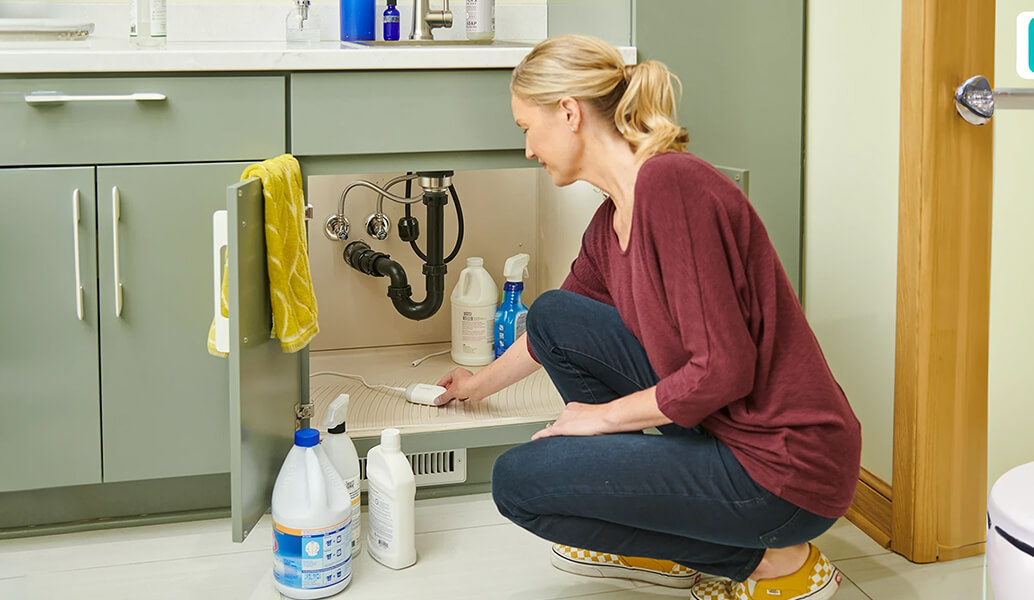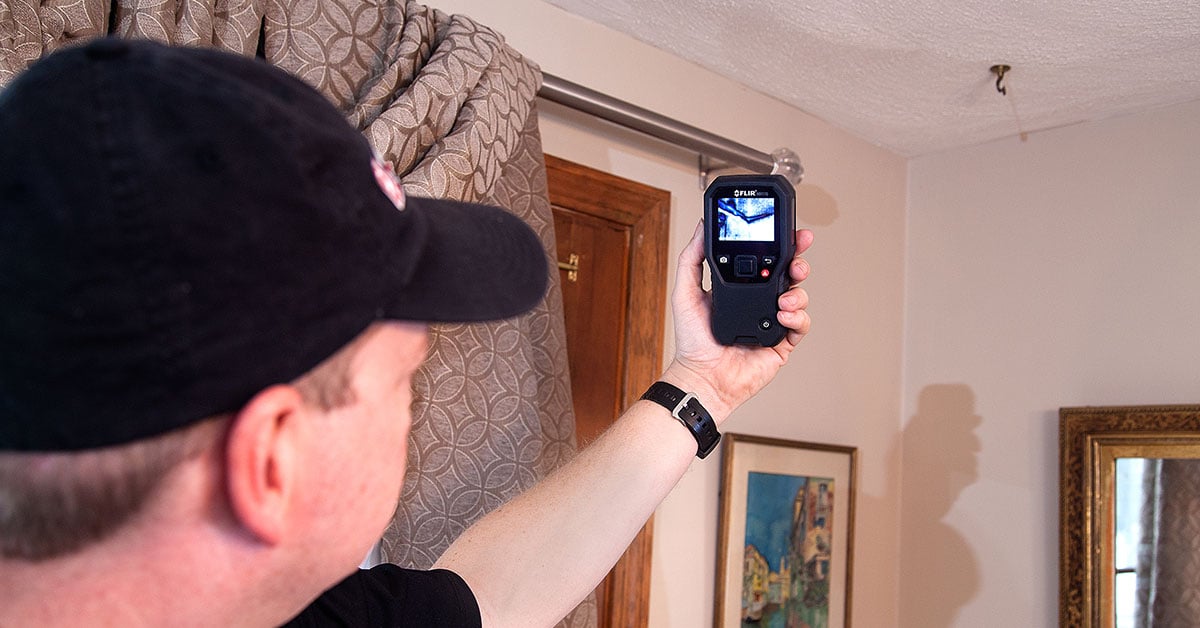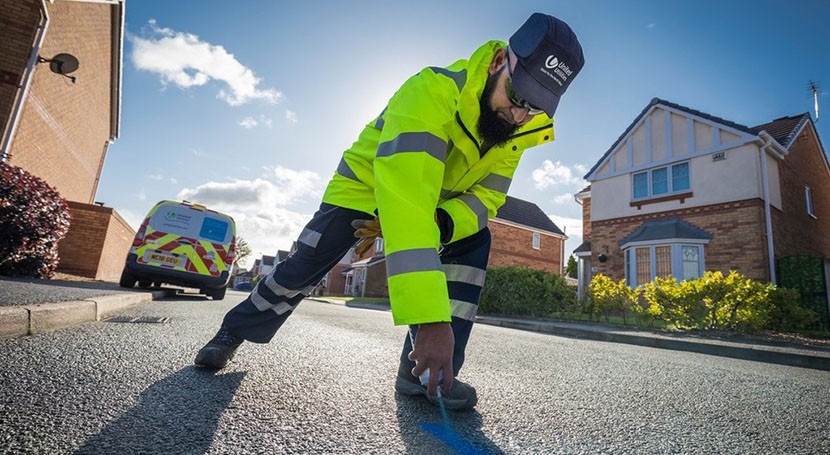Ingenious Solutions for Very Early Detection of Water Leakages in Buildings and Framework
From sophisticated leakage detection technologies to the deployment of IoT sensing units for real-time monitoring, the landscape of leakage avoidance is developing quickly. Automated water flow evaluation systems are improving exactly how leaks are identified and attended to, leading the way for a proactive strategy to water leak detection.
Advanced Leak Discovery Technologies
Advanced leakage detection modern technologies, geared up with sophisticated sensing units and formulas, play a crucial duty in swiftly identifying and pinpointing water leakages in various settings. These technologies employ a combination of acoustic, thermal, and electromagnetic picking up methods to identify leakages accurately. Acoustic sensors detect the sound of leaving water, permitting accurate localization of the leakage source. Thermal imaging detects temperature modifications brought on by water leak, giving one more effective technique for leak recognition. Electro-magnetic sensing units can identify modifications in electromagnetic fields created by water, using yet one more layer of leak discovery capability.

IoT Sensors for Real-Time Surveillance
In the realm of modern water leak detection, the assimilation of IoT sensors for real-time surveillance represents a pivotal advancement in boosting aggressive leakage discovery abilities. These sensing units offer constant tracking of water supply, providing real-time data on water flow prices, stress variations, and temperature level adjustments. By leveraging IoT modern technology, these sensors can spot even the tiniest abnormalities in water use patterns, enabling early identification of potential leaks prior to they rise into major concerns.
IoT sensors transmit data to a centralized system, where advanced algorithms examine the information and produce signals or notifications when irregularities are identified. This real-time monitoring capability permits homeowner or facility supervisors to promptly deal with leakages, lessening water damages, reducing fixing prices, and saving water sources.
Additionally, IoT sensing units can be integrated with structure monitoring systems, enabling computerized feedbacks to detected leakages, such as turning off water shutoffs or activating pumps to minimize the impact of leaks. Overall, the application of IoT sensors for real-time monitoring significantly improves the performance and effectiveness of water leak detection in structures and facilities.
Device Understanding Algorithms for Leak Prediction

One key benefit of utilizing device discovering for leakage forecast is its capacity to continuously learn and improve its accuracy gradually. As more data is collected and fed right into the algorithm, it can improve its predictions and adapt to transforming problems, ultimately increasing the dependability of leakage discovery systems.
Moreover, maker understanding algorithms can aid in identifying refined indications of leaks that might go undetected by standard tracking approaches. water leak detection. By evaluating complex information embed in real-time, these algorithms can provide early warnings and informs, enabling prompt treatment and preventive maintenance to reduce possible water damage and connected prices
Using Thermal Imaging for Leakage Detection
Thermal imaging technology provides an encouraging technique for spotting water leakages in various systems directory and infrastructures. By making use of infrared radiation and temperature variances, thermal imaging cams can determine concealed leakages that are not web link conveniently noticeable to the nude eye.
Among the key advantages of thermal imaging for leak discovery is its non-intrusive nature. Unlike traditional methods that might call for burglarizing wall surfaces or floorings to find leaks, thermal imaging enables non-destructive testing. This not only saves time and reduces costs yet additionally minimizes disruption to the building or infrastructure being evaluated. Furthermore, thermal imaging can rapidly scan big areas, providing a detailed introduction of possible leakage sources in a timely fashion. On the whole, the use of thermal imaging technology enhances the efficiency and accuracy of water leak discovery, making it a useful device for keeping the honesty of buildings and frameworks.
Automated Water Flow Evaluation Solutions
How can computerized water flow evaluation systems reinvent the discovery and administration of leaks in different systems and infrastructures? Automated water circulation evaluation systems use a proactive technique to leak detection by continually checking water flow prices and patterns. By developing baseline data, these systems can quickly determine inconsistencies that may suggest a leakage, allowing punctual intervention to stop comprehensive damages.
These systems make use of advanced formulas to assess real-time data and supply immediate notifies when abnormalities are spotted, permitting for swift action to be taken. Furthermore, computerized water flow analysis systems can be incorporated important site with building administration systems or IoT platforms, boosting overall effectiveness and making it possible for remote tracking capacities.
Additionally, the information gathered by these systems can be made use of for predictive upkeep purposes, assisting to determine possible powerlessness in the infrastructure before leaks happen. On the whole, the implementation of automatic water circulation analysis systems can substantially improve leak discovery and management methods, ultimately causing set you back financial savings, reduced water wastage, and boosted sustainability in structures and framework.

Conclusion
In final thought, the integration of innovative leak discovery modern technologies, IoT sensors, artificial intelligence algorithms, thermal imaging, and automated water circulation evaluation systems offers innovative services for very early discovery of water leakages in buildings and infrastructure. These innovations make it possible for real-time monitoring, forecast of leakages, and efficient detection approaches to stop water damages and wastage. Executing these options can assist in preserving the stability and sustainability of water supply in various settings.